Posté par Damien Bril, le 9 septembre 2013;
- Date limite : 25 novembre 2013
Afterlives of Systems
communication+1, Volume 3, 2014
Guest Editors: Christina Vagt, Florian Sprenger
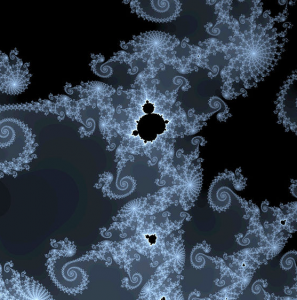 This issue of communication+1 investigates the afterlives of systems since the early 20th century, following Aby Warburgs and Walter Benjamins historiographical concept of afterlife as the transformations and iterations a concept traverses to become productive at a specific moment in time. Under the impression of todays global crisis phenomena and the rise of an ‘ecological paradigm’ (Erich Hörl), we ask for papers that explore these afterlives from a historical or systematic perspective. We are interested in the promises, plausibilities and argumentative resources of system-oriented thinking, holistic or vitalistic worldviews and mechanistic approaches on different fields of knowledge during the . . . → En lire plus This issue of communication+1 investigates the afterlives of systems since the early 20th century, following Aby Warburgs and Walter Benjamins historiographical concept of afterlife as the transformations and iterations a concept traverses to become productive at a specific moment in time. Under the impression of todays global crisis phenomena and the rise of an ‘ecological paradigm’ (Erich Hörl), we ask for papers that explore these afterlives from a historical or systematic perspective. We are interested in the promises, plausibilities and argumentative resources of system-oriented thinking, holistic or vitalistic worldviews and mechanistic approaches on different fields of knowledge during the . . . → En lire plus
Posté par Damien Bril, le 9 septembre 2013;
- Date limite : 1 novembre 2013
- Date et lieu du colloque : 19-21 mars 2014, Copenhague
The Royal Danish Academy of Fine Arts, Copenhagen, March 19 – 21, 2014 Deadline-CFP: 1 nov. 2013
What Images Do Symposium
Confirmed keynotes: Georges Didi-Huberman – Jonathan Hay – Jacques Rancière
 The aim of this symposium is to contribute to our understanding of what the image does (its pragma). The awkward entanglement of being and non-being (Plato) calls for an examination of the image as an act or event. Through its event, the image-act instigates an image-related reflection upon the issues of being and non-being, physis and semiosis, actuality and potentiality. The concept of iconic difference as coined by art historian and philosopher Gottfried Boehm is vital to our concern. Iconic . . . → En lire plus The aim of this symposium is to contribute to our understanding of what the image does (its pragma). The awkward entanglement of being and non-being (Plato) calls for an examination of the image as an act or event. Through its event, the image-act instigates an image-related reflection upon the issues of being and non-being, physis and semiosis, actuality and potentiality. The concept of iconic difference as coined by art historian and philosopher Gottfried Boehm is vital to our concern. Iconic . . . → En lire plus
Posté par Damien Bril, le 6 septembre 2013;
- Date limite : 30 octobre 2013
- Date et lieu du colloque : 7 février 2014, Edimbourg
Future Bourgeois: A Symposium and Workshop for New Work on Louise Bourgeois
Edinburgh, February 07, 2014
Organised by the ARTIST ROOMS RESEARCH PARTNERSHIP, The Fruitmarket Gallery and National Galleries of Scotland
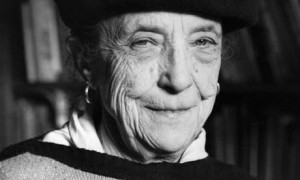 CALL FOR PAPERS CALL FOR PAPERS
This autumn The Scottish National Gallery of Modern Art and The Fruitmarket Gallery, both in Edinburgh, Scotland, will host complementary exhibitions of the work of artist Louise Bourgeois. ‘ARTIST ROOMS: Louise Bourgeois, A Woman without Secrets’ at the Scottish National Gallery of Modern Art (26 October 2013 to 18 May 2014) will be the first showing of an outstanding collection of works by Bourgeois now on loan to the national ARTIST ROOMS collection and touring programme. Highlighting the artist’s late work, the show will include . . . → En lire plus
Posté par Damien Bril, le 3 septembre 2013;
- Date limite : 15 septembre 2013
- Date et lieu du colloque : 14-16 février 2014, Florence
Florence, Kunsthistorisches Institut in Florenz – Max-Planck-Institut, 14. – 16.02.2014 Deadline-CFP: 15 sept. 2013 Vasari als Paradigma. Rezeption, Kritik, Perspektiven The Paradigm of Vasari. Reception, Criticism, Perspectives
Conference organized by Alessandro Nova and Fabian Jonietz
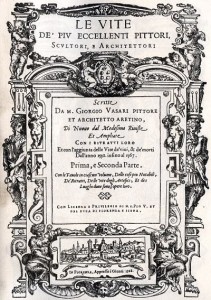 For the past decade and a half, numerous research projects have rededicated themselves to the key sources of art history and to editing and commenting on early art historiographical writings (Vasari, Bellori, Sandrart, Malvasia). One main difference between earlier attempts which dealt with these authors is a current approach which no longer concentrates on factual and documentary evidence alone, but which aims to reveal the narrative models and literary strategies of such texts as well. This fact . . . → En lire plus For the past decade and a half, numerous research projects have rededicated themselves to the key sources of art history and to editing and commenting on early art historiographical writings (Vasari, Bellori, Sandrart, Malvasia). One main difference between earlier attempts which dealt with these authors is a current approach which no longer concentrates on factual and documentary evidence alone, but which aims to reveal the narrative models and literary strategies of such texts as well. This fact . . . → En lire plus
Posté par Olivier Bonfait, le 31 août 2013;
- Date limite : 1er novembre 2013, 1er novembre 2013
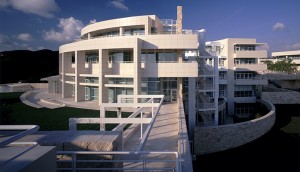 The Getty Research Institute and the Getty Villa invite proposals for the 2014–2015 academic year, “Object – Value – Canon,” residential grants and fellowships . The theme aims to explore methods of art-historical interpretation, shifting from the traditional processes and terminology to a variety of new strategies. The Getty Research Institute and the Getty Villa invite proposals for the 2014–2015 academic year, “Object – Value – Canon,” residential grants and fellowships . The theme aims to explore methods of art-historical interpretation, shifting from the traditional processes and terminology to a variety of new strategies.
Object, value, and canon have different significances in other historical and social contexts. A more diverse integration of understudied visual and archaeological objects necessitates areassessment of the traditional approach in order to enrich the understanding of the world’s artistic heritage. Art-historical interpretation has traditionally proceeded from the description of an object; to discussions about its artistic, cultural, or commercial value; and then . . . → En lire plus
Posté par Damien Bril, le 16 juillet 2013;
- Date limite : 11 novembre 2013
- Date et lieu du colloque : 10-12 avril 2014, Londres
AAH2014 – Royal College of Art, London, April 10 – 12, 2014 Deadline-CFP: 11 nov. 2013
40th Association of Art Historians Annual Conference, Royal College of Art, London
Session: Making Do – Materiality in the Conceptual Age
 The emergence of conceptual art in the United States and post-war Europe marked the most radical change of paradigm since Marcel Duchamp’s ready-made. Advocating the ‘dematerialization’ of the art object and a redefinition of art as a (self-) questioning language, conceptualism challenged received ideas about the production and circulation of artworks. Over recent years, a large body of research has examined the development of conceptual practices in so-called ‘peripheral’ regions, such as Eastern Europe and Latin America, and the ways in which . . . → En lire plus The emergence of conceptual art in the United States and post-war Europe marked the most radical change of paradigm since Marcel Duchamp’s ready-made. Advocating the ‘dematerialization’ of the art object and a redefinition of art as a (self-) questioning language, conceptualism challenged received ideas about the production and circulation of artworks. Over recent years, a large body of research has examined the development of conceptual practices in so-called ‘peripheral’ regions, such as Eastern Europe and Latin America, and the ways in which . . . → En lire plus
Posté par Pascale Dubus, le 13 juillet 2013;
- Date et lieu du colloque : 28-30 november 2013, Münster, Academy of Fine Arts
- Date limite : 15 septembre 2013
 Both Gilles Deleuze and Michel Foucault were intensely engaged with aspects of the body. In particular, their critical drafts of aesthetics as much as their political thinking are based on conceptions of the body and corporeality. Deleuze’s body is flexible, fleshy and abstract at the same time. Following Spinoza, in asking what the body can do, he unfolds his theory of becoming, becoming animal, becoming other. The potentiality of the body is revealed here as being in a state of nomadism and constant transformation. Together with Guattari he develops the concept of the “Body without Organs”, as an event through which . . . → En lire plus Both Gilles Deleuze and Michel Foucault were intensely engaged with aspects of the body. In particular, their critical drafts of aesthetics as much as their political thinking are based on conceptions of the body and corporeality. Deleuze’s body is flexible, fleshy and abstract at the same time. Following Spinoza, in asking what the body can do, he unfolds his theory of becoming, becoming animal, becoming other. The potentiality of the body is revealed here as being in a state of nomadism and constant transformation. Together with Guattari he develops the concept of the “Body without Organs”, as an event through which . . . → En lire plus
Posté par Damien Bril, le 12 juillet 2013;
- Date limite : 9 septembre 2013
- Date et lieu du colloque : 14-15 novembre 2013, Nottingham
Nottingham Contemporary/ University of Nottingham, November 14 – 15, 2013 Deadline-CFP: 9 sept. 2013
“Shimmering, Shining, Vomiting, Glitter”: the politics and poetics of disgust
Convenors: Lucy Bradnock (University of Nottingham), Isobel Whitelegg (Nottingham Contemporary)
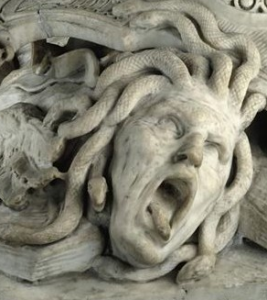 Taking place in parallel with a new exhibition of the work of artist collective Asco – whose name in Spanish refers to disgust, nausea, revulsion – this two day symposium seeks to explore the meaning of disgust across a range of practices, including art, literature, film and popular culture, activism, spatial practice and performance, from the twentieth century to the present day. Keynotes include: Chon Noriega (UCLA); Dominic Johnson (QMUL); Katie Jones (Nottingham) and Imogen Tyler (Lancaster). Taking place in parallel with a new exhibition of the work of artist collective Asco – whose name in Spanish refers to disgust, nausea, revulsion – this two day symposium seeks to explore the meaning of disgust across a range of practices, including art, literature, film and popular culture, activism, spatial practice and performance, from the twentieth century to the present day. Keynotes include: Chon Noriega (UCLA); Dominic Johnson (QMUL); Katie Jones (Nottingham) and Imogen Tyler (Lancaster).
. . . → En lire plus
Posté par Pascale Dubus, le 4 juillet 2013;
- Date limite : 31 août 2013
- Date et lieu du colloque : 1-3 septembre 2014, Royaume Uni, St Andrews University
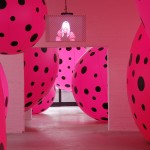 ‘What is the Contemporary ?’ is a multi-disciplinary international conference due to be hosted by St Andrews University School of Modern Language’s Institute for Contemporary and Comparative Literature (ICCL) on 1-3 September 2014. Keynote speakers and performers will be announced on the Institute website in due course. ‘What is the Contemporary ?’ is a multi-disciplinary international conference due to be hosted by St Andrews University School of Modern Language’s Institute for Contemporary and Comparative Literature (ICCL) on 1-3 September 2014. Keynote speakers and performers will be announced on the Institute website in due course.
Calls for individual papers (duration 30 mins) are now invited as well as proposals for conference panels (three papers of 20 mins each). A title and abstract of 300-400 words should be provided for an individual paper ; panel proposals should include three abstracts and a panel title. The language of the conference is English. Proposals are welcome from researchers in any discipline, and should contribute . . . → En lire plus
Posté par Marine Schütz, le 4 juillet 2013;
- Date limite : 1er octobre 2013
 Journal of Surrealism and the Americas Journal of Surrealism and the Americas
The editors announce a call for papers for an issue on Latin America.
This issue explores what has often been described as Surrealism’s « tense relationship » with Latin America. To what extent did Latin American literature and art embrace Surrealism’s « other dimension of reality »? Rather than viewing Latin American Surrealism as an extension or rejection of a European progenitor, we seek essays that shed new light on surrealist thinking by Latin American artists and writers. How did Surrealism’s modernist stylistics present a more poetic, abstract alternative to Social Realism—one that appealed to a significant cosmopolitan constituency in Latin America? . . . → En lire plus
Posté par Matthieu Lett, le 3 juillet 2013;
- Date limite : 22 septembre 2013 ou 28 février 2014
 Imiter, copier, reproduire ont longtemps été considérés comme des opérations consubstantielles à l’apprentissage et à la production artistiques, jusqu’à la création contemporaine qui reconstruit sans cesse ses rapports à la technique et à la tradition. De l’exercice au jeu, et du jeu au détournement, il n’y a qu’un pas. La copie, si elle est exercée dans un but comique ou satirique peut aussi conduire au pastiche ou à la parodie. Les contrefaçons et forgeries cherchent, quant à elles, à passer pour originales et falsifient souvent style et signature. L’objectif est ici d’interroger le statut de l’œuvre d’art et d’en explorer l’historiographie. Comment la tradition artistique a-t-elle peu . . . → En lire plus Imiter, copier, reproduire ont longtemps été considérés comme des opérations consubstantielles à l’apprentissage et à la production artistiques, jusqu’à la création contemporaine qui reconstruit sans cesse ses rapports à la technique et à la tradition. De l’exercice au jeu, et du jeu au détournement, il n’y a qu’un pas. La copie, si elle est exercée dans un but comique ou satirique peut aussi conduire au pastiche ou à la parodie. Les contrefaçons et forgeries cherchent, quant à elles, à passer pour originales et falsifient souvent style et signature. L’objectif est ici d’interroger le statut de l’œuvre d’art et d’en explorer l’historiographie. Comment la tradition artistique a-t-elle peu . . . → En lire plus
Posté par Pascale Dubus, le 3 juillet 2013;
- Date limite : 27 septembre 2013
- Date et lieu du colloque : 13-15 juillet 2014, Université de Southampton
 Society for Renaissance Studies 6th Biennial Conference Centre for Medieval and Renaissance Culture University of Southampton, 13-15 July 2014 Society for Renaissance Studies 6th Biennial Conference Centre for Medieval and Renaissance Culture University of Southampton, 13-15 July 2014
The conference theme is ‘Performative Spaces’. Renaissance scholars from the disciplines of archaeology, architecture, history of art, history, history of science and medicine, literature, music, philosophy and other fields are invited to submit proposals for panels (90 mins), and individual papers (20 mins), that engage with ‘Performative Spaces’ :
• as liturgical or religious performances;
• by addressing the ways objects were intended to tell stories;
• as processions, rituals, and ceremonies;
• as houses, and through building design;
• by exploring diplomatic and political spaces;
• as . . . → En lire plus
Posté par Matthieu Lett, le 27 juin 2013;
- Date limite : 15 août 2013
- Date et lieu du colloque : 29-30 novembre 2013, Université Paris 3
 Les membres de l’ED 122 de l’Université Paris 3 – Sorbonne Nouvelle proposent une journée d’études portant sur la représentation du bouc émissaire dans les arts et la littérature des XXe-XXIe siècles en Europe latine et Amérique latine et lancent un appel à communication à l’attention des chercheurs en littérature, études théâtrales et arts visuels. Les membres de l’ED 122 de l’Université Paris 3 – Sorbonne Nouvelle proposent une journée d’études portant sur la représentation du bouc émissaire dans les arts et la littérature des XXe-XXIe siècles en Europe latine et Amérique latine et lancent un appel à communication à l’attention des chercheurs en littérature, études théâtrales et arts visuels.
Figure de la singularité, le bouc émissaire renvoie à plusieurs types de représentations. Lié à l’idée de sacrifice dans la tradition judéo-chrétienne, sa mise à mort est censée expier les crimes de toute une communauté et en purger les fautes. Les travaux menés dans le champ de l’anthropologie ont quant à eux mis en lumière sa fonction dans les rites . . . → En lire plus
Posté par Matthieu Lett, le 11 juin 2013;
- Date limite : 15 juillet 2013
- Date et lieu du colloque : 9-10 septembre 2013, Université Babes- Bolyai , Faculté des Lettres, 31 rue Horea, Cluj-Napoca
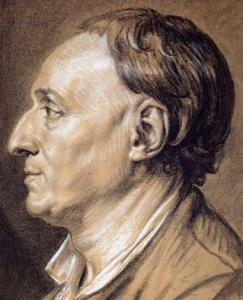 La contribution de Diderot à l’attitude moderne envers l’homme et son monde est moins visible en Europe Centrale et Orientale que celle de Jean-Jacques Rousseau. La question est cependant posée : qui fut Diderot, quelle est l’actualité de son œuvre, quelles sont les interprétations authentiques de ses écrits ? La ville qui accueillera en septembre 2013 le colloque international Ars, cognitio. Hommage à Denis Diderot est un grand centre universitaire et une cité des arts du spectacle, lieu de rencontre et de travail commun des savants et des artistes. L’anniversaire de la naissance de Denis Diderot offre l’occasion pour une possible nouvelle thématisation de la . . . → En lire plus La contribution de Diderot à l’attitude moderne envers l’homme et son monde est moins visible en Europe Centrale et Orientale que celle de Jean-Jacques Rousseau. La question est cependant posée : qui fut Diderot, quelle est l’actualité de son œuvre, quelles sont les interprétations authentiques de ses écrits ? La ville qui accueillera en septembre 2013 le colloque international Ars, cognitio. Hommage à Denis Diderot est un grand centre universitaire et une cité des arts du spectacle, lieu de rencontre et de travail commun des savants et des artistes. L’anniversaire de la naissance de Denis Diderot offre l’occasion pour une possible nouvelle thématisation de la . . . → En lire plus
Posté par Pascale Dubus, le 7 juin 2013;
- Date et lieu du colloque : 20-21 juin 2013, Paris, INHA
 R. de Gourmont : « Le lieu commun est plus et moins qu’une banalité : c’est une banalité mais parfois inéluctable ; c’est une banalité mais si universellement acceptée qu’elle prend alors le nom de vérité. La plupart des vérités qui courent (les vérités sont très coureuses) peuvent être regardées comme des lieux communs, c’est-à-dire des associations d’idées communes à un grand nombre d’hommes que presque aucun de ces hommes n’oserait briser de propos délibéré ». Lieu commun – idée, sujet de conversation que tout le monde utilise, selon le dictionnaire. Visiblement, les lieux communs sont . . . → En lire plus R. de Gourmont : « Le lieu commun est plus et moins qu’une banalité : c’est une banalité mais parfois inéluctable ; c’est une banalité mais si universellement acceptée qu’elle prend alors le nom de vérité. La plupart des vérités qui courent (les vérités sont très coureuses) peuvent être regardées comme des lieux communs, c’est-à-dire des associations d’idées communes à un grand nombre d’hommes que presque aucun de ces hommes n’oserait briser de propos délibéré ». Lieu commun – idée, sujet de conversation que tout le monde utilise, selon le dictionnaire. Visiblement, les lieux communs sont . . . → En lire plus
Posté par Michela Passini, le 6 juin 2013;
- Date limite : 24 juin 2013
- Date et lieu : 30 septembre-4 octobre 2013, Université d'Eichstätt
 Le Réseau International d’Histoire de l’Art, en collaboration avec le Master Aisthesis. Arts et littératures (universtité de Augsburg, université Ludwig Maximilian de Munich, université de Ratisbonne et université catholique de Eichstätt-Ingolstadt; www.aisthesis-master.de) organise, Le Réseau International d’Histoire de l’Art, en collaboration avec le Master Aisthesis. Arts et littératures (universtité de Augsburg, université Ludwig Maximilian de Munich, université de Ratisbonne et université catholique de Eichstätt-Ingolstadt; www.aisthesis-master.de) organise,
du 30 au 4 octobre 2013
un atelier de recherches sur le thème : Vision en mouvement: configurations du temps
Pour traiter de la temporalité inscrite dans l’image, l’histoire de l’art a longtemps fixé son attention sur la narration propre à la peinture ou à la sculpture d’histoire. Cet atelier de recherche souhaite aborder la question différemment. Plutôt que de traiter des œuvres comme synthèses d’une narration, il entend viser les manières par lesquelles l’art configure le temps.
1. La perception est . . . → En lire plus
Posté par Olivier Bonfait, le 30 mai 2013;
- Date et lieu du débat : Samedi 1er juin 16h30-18h30, Fontainebleau, Salle des Elections (place de la République, dite du marché),
 Premier Forum des Associations d’enseignement de l’histoire de l’art à l’Université Premier Forum des Associations d’enseignement de l’histoire de l’art à l’Université
Festival d’histoire de l’art de Fontainebleau, 1er juin 2013
En étroite collaboration avec le Festival d’histoire de l’art de Fontainebleau (http://festivaldelhistoiredelart.com/), l’APAHAU organise un premier forum des associations d’enseignants et de chercheurs universitaires en histoire de l’art, le samedi 1er juin 2013.
Réunissant collègues anglais, français, italiens, suisses, cette rencontre, menée de concert avec d’autres associations en Europe, sera l’occasion de faire le point sur les formations proposées en histoire de l’art dans les différents pays, leurs outils et leurs méthodologies, et sur les programmes universitaires européens de . . . → En lire plus
Posté par Pascale Dubus, le 27 mai 2013;
- Date limite : 21 juin 2013
- Date et lieu du colloque : Samedi 26 octobre 2013 , Londres, The Courtauld Institute of Art.
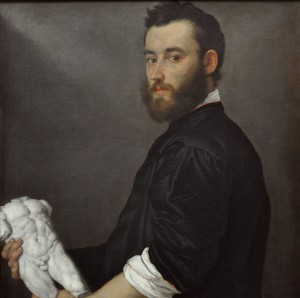 Did I request thee, Maker, from my Clay To mould me Man? Did I solicit thee From darkness to promote me? Did I request thee, Maker, from my Clay To mould me Man? Did I solicit thee From darkness to promote me?
John Milton, Paradise Lost, Book X (1667)
Complex narratives spanning months, years or even decades exist behind the single bracketed date attached to artworks to indicate their moment of execution or completion.This one-day symposium will explore the ‘ante-natal’ development of early modern art from its conception to its ‘quickening’ and eventual birth. The process fascinated contemporary theorists and continues to raise questions for modern art historians. For example, when was an . . . → En lire plus
Posté par Le Centre allemand d'histoire de l'art de Paris, le 24 mai 2013;
- Date et lieu du colloque : 11-13 juin 2013, Paris, BNF, & Musée d’art et d’histoire du Judaïsme.
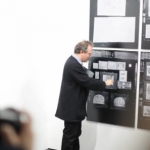 Les images ne suscitent pas seulement d’intenses émotions : elles portent les traces de souffrances et de passions enfouies sous les strates de l’histoire, et semblent ainsi s’extraire du temps et des récits. Ce sont précisément ces phénomènes de survivance et d’anachronisme, propres aux images et à ce qu’elles conservent (et qui ne correspondent pas toujours à l’idée que nous nous faisons d’un temps révolu), qui sont au cœur des réflexions du philosophe et historien de l’art Georges Didi-Huberman. Sa critique de l’interprétation des images en les subordonnant systématiquement au langage a abouti à une approche radicalement nouvelle de celles-ci et de leur pouvoir. Traduits dans de nombreux pays, les travaux de Georges Didi-Huberman ont trouvé un . . . → En lire plus Les images ne suscitent pas seulement d’intenses émotions : elles portent les traces de souffrances et de passions enfouies sous les strates de l’histoire, et semblent ainsi s’extraire du temps et des récits. Ce sont précisément ces phénomènes de survivance et d’anachronisme, propres aux images et à ce qu’elles conservent (et qui ne correspondent pas toujours à l’idée que nous nous faisons d’un temps révolu), qui sont au cœur des réflexions du philosophe et historien de l’art Georges Didi-Huberman. Sa critique de l’interprétation des images en les subordonnant systématiquement au langage a abouti à une approche radicalement nouvelle de celles-ci et de leur pouvoir. Traduits dans de nombreux pays, les travaux de Georges Didi-Huberman ont trouvé un . . . → En lire plus
Posté par Marine Schütz, le 22 mai 2013;
- Date du colloque : 24 et 25 mai
 Colloque : Lire Debord Colloque : Lire Debord
Autour de l’exposition
Guy Debord, un art de la guerre
Vendredi 24 mai 2013
Bibliothèque nationale de France
Samedi 25 mai 2013
Institut Suédois
Le colloque « Lire Debord » présentera les travaux de chercheurs d’horizons et de disciplines variés autour de trois thèmes principaux : la fabrique de l’oeuvre, le matériel de l’action, et les échanges ou comparaisons avec d’autres figures dans les champs de l’art, de la pensée ou du politique. Une table ronde clôturera la journée du 25 mai.
Entrée libre dans la limite des places disponibles
Certaines communications se feront . . . → En lire plus
|
Équipe Rédacteur en chef : Olivier Bonfait.
Rédacteurs : Elliot Adam (Moyen Age) ; Nicolas Ballet (XX-XXIe siècles) ; Matthieu Fantoni (musées) ; Antonella Fenech Kroke (bourses) ; Vladimir Nestorov (Lettre mensuelle)
Administrateur web : Matthieu Lett.
ancien éditeur : Pascale Dubus
anciens rédacteurs : Gautier Anceau, Sébastien Bontemps, Damien Bril ; Sébastien Chauffour ; Ludovic Jouvet ; Aude Prigot
|
 This issue of communication+1 investigates the afterlives of systems since the early 20th century, following Aby Warburgs and Walter Benjamins historiographical concept of afterlife as the transformations and iterations a concept traverses to become productive at a specific moment in time. Under the impression of todays global crisis phenomena and the rise of an ‘ecological paradigm’ (Erich Hörl), we ask for papers that explore these afterlives from a historical or systematic perspective. We are interested in the promises, plausibilities and argumentative resources of system-oriented thinking, holistic or vitalistic worldviews and mechanistic approaches on different fields of knowledge during the . . . → En lire plus
This issue of communication+1 investigates the afterlives of systems since the early 20th century, following Aby Warburgs and Walter Benjamins historiographical concept of afterlife as the transformations and iterations a concept traverses to become productive at a specific moment in time. Under the impression of todays global crisis phenomena and the rise of an ‘ecological paradigm’ (Erich Hörl), we ask for papers that explore these afterlives from a historical or systematic perspective. We are interested in the promises, plausibilities and argumentative resources of system-oriented thinking, holistic or vitalistic worldviews and mechanistic approaches on different fields of knowledge during the . . . → En lire plus


















